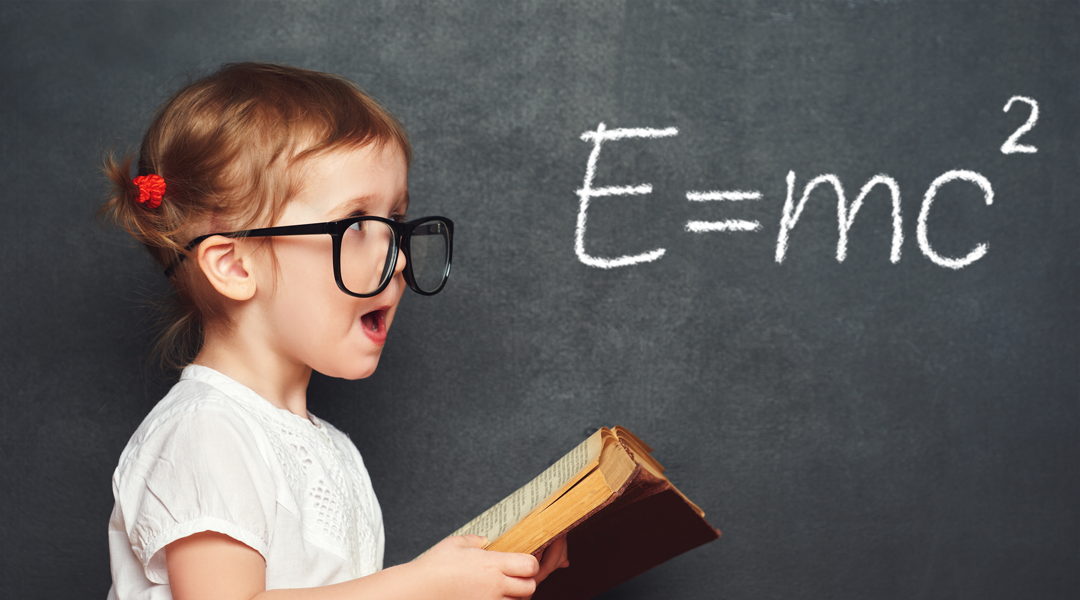
After having a baby, parents generally have two attitudes towards mathematics enlightenment:
[Don’t worry, the child is still young, so you will naturally learn in kindergarten.]
[Counting can be taught early, and people will not suffer if they learn it one step earlier.]
These two attitudes and practices are not correct. Children’s mathematics enlightenment can start from the age of 1, and relatively systematic targeted training can be carried out at the age of 3.
However, the way of mathematics enlightenment is not just counting, patronizing children to learn 123 and missing the cultivation of other abilities. Even if children can count from 1 to 100, it is meaningless.
Today, we invited Tang Wei, a parenting research consultant and also a second treasure mother, to talk to us about the correct way to open children’s math enlightenment.
01 Mathematics Enlightenment, More Than Number 123
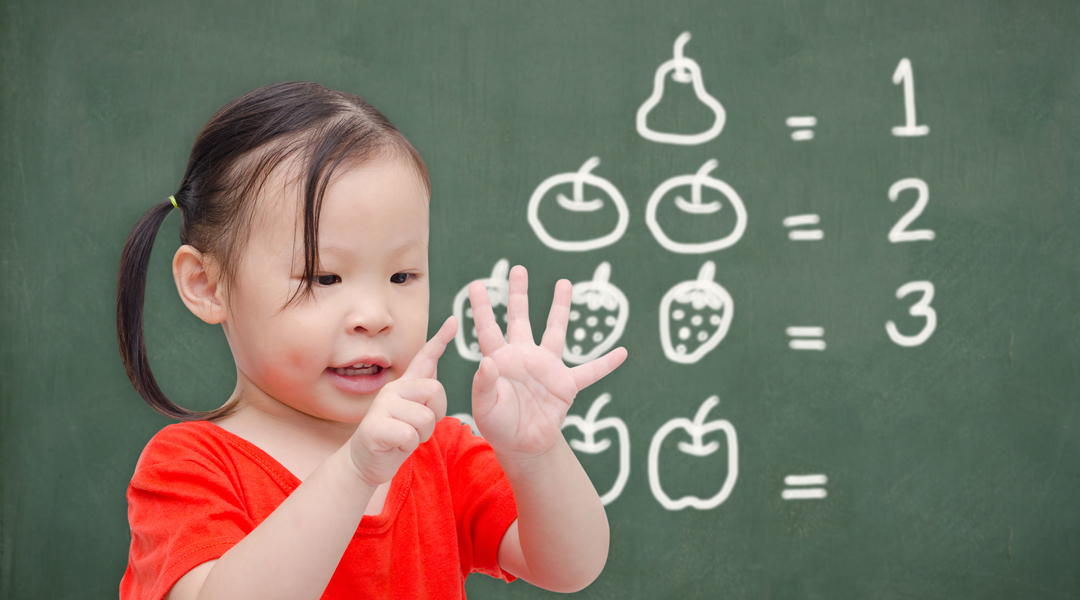
Many parents will teach their children how to count intentionally or unintentionally when they can speak. They think that being able to count means being smart. Some parents even think that their children will fall behind the starting line if they cannot count.
However, it is important to know that [1, 2, 3…] these numbers are just symbols in children’s eyes like Xiao Mao puppies. Through the method of [rote memorization], they cannot be linked to the calculation method of quantity at all.
Even if Eva can count from 1 to 100, she probably can’t tell which is big, 4 or 8, and she probably doesn’t know that the right side of 10 is what’s number.
Teaching children to count is only a small part of mathematics enlightenment. Mathematics enlightenment before the age of 3 also includes three points: classification ability, measurement and comparison, and sense of space.
Let’s talk separately about how to use scenes and props in life to easily teach children mathematics.
02 Count
Teaching children to count, knowing numbers is the first step, understanding the meaning of numbers is more important, counting with fingers has long been out, to turn numbers into things that he can see and touch.
0 ~ 2 years old: repeated memory
For babies who are not very talkative, the best way to enlighten them in mathematics is to keep inputting, that is, chanting, to the children.
Although it is said that it will not be remembered until one year old, it is no problem for parents to start early.
Take your baby up the stairs and count while climbing: 1, 2, 3…
Build building blocks with your child. After building, you can count with your child: 1, 2, 3…
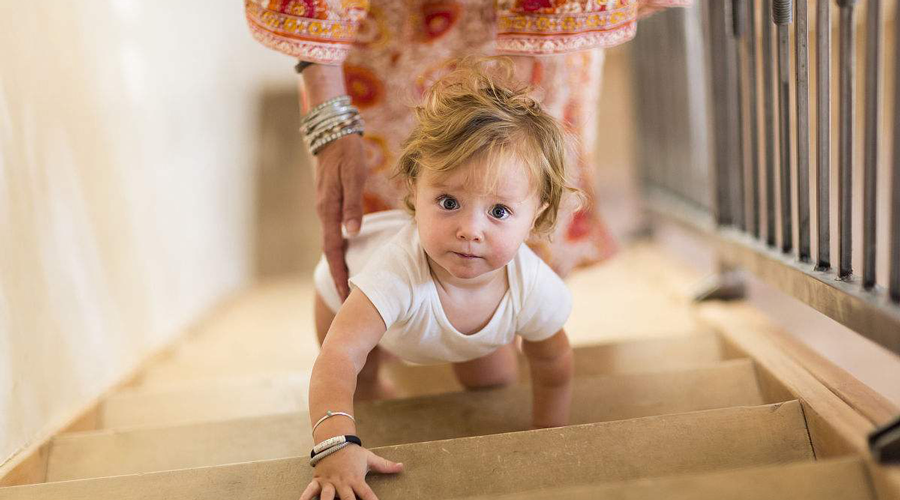
If you talk too much, the baby will slowly learn this counting method by himself. When you don’t count one day, the baby will take the initiative to remind you.
After 2 years old: understanding and using
After the age of 2, you can start to use life scenes to teach your children how to recognize numbers, such as clocks and car tags. Wherever there are numbers in your life, you can read them while watching them, and you can also have a memory and connection with numbers.
At this time, the baby spoke more quickly. In addition to talking to the baby, he could also teach the baby [points].
When the baby eats biscuits, point to the biscuits and count them one by one to show him how many he can eat.
When going to the park, pick out a few leaves and show the baby how many.
When shopping in the supermarket, you can count the fruits: 1, 2, 3… after counting, ask him: how many apples are there?
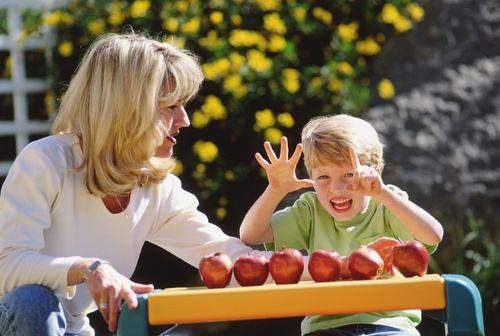
If the baby answers: 3! This shows that the baby has been able to count several objects and understand the meaning of numbers.
03 Measurement and comparison
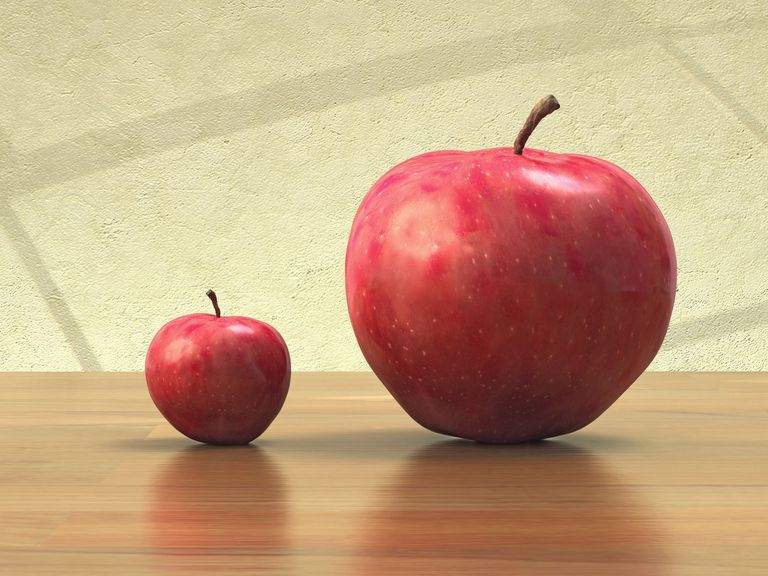
Size, how much, height, distance, are all comparisons.
0 ~ 2 years old: repeated memory
The best way to enlighten is to talk about it.
Father is fat, mother is thin, baby’s hands are small and mother’s hands are big.
The bus drives fast, we walk slowly, the small trees are tall and the small flowers are short.
The train is long, the car is short, the balloon is light and the football is heavy.
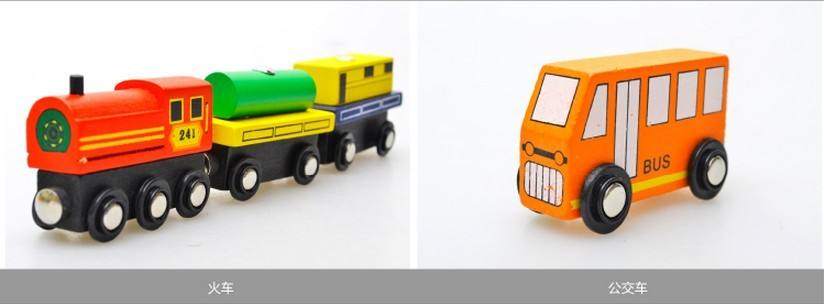
After 2 years old: understanding and using
Through interactive games to understand and use.
Food is the best incentive to everything. It can easily make children understand [big] [small] [more] [less], guide children to speak out and make choices.
Do you want big strawberries or small strawberries?
I want a big one!
Do you eat this plate of watermelon or this plate of watermelon?
Many!
While saying this, I choose to repeat my memory. There are also delicious ones that children like best.
04 Classification

Classification can cultivate children’s perceptual knowledge of aggregation.
This part does not have a clear division of stages. After the baby is 1.5 years old, he can play the classification game with the baby.
When playing with building blocks, the mother can demonstrate and guide the baby over and over again:
You see, mom put the red building blocks together, you also bring the red ones.
After the age of 2, you can give your baby [challenge classification task]. Besides color classification, you can also classify the shape of building blocks.
Put these triangular building blocks on the plate and the round ones in the bucket.
Apart from building blocks, anything can be classified:
Different socks in the home disrupt the order and let the children match the socks.
Leaves in the yard, let the baby find their [family] according to color or shape.

Personally, I like classification games best. Every time I set a task, Eva plays very attentively for half an hour without any problem, so I can [take the opportunity to be lazy].
05 Sense of Space
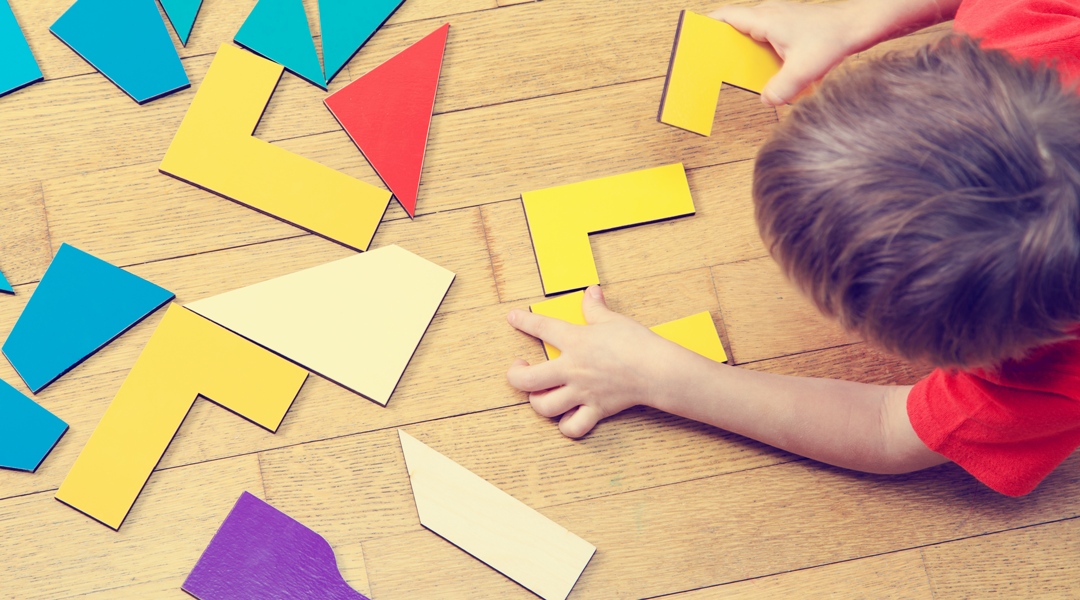
Children with a good sense of space will not have poor geometric scores.
Children’s sense of space includes different spatial relationship perception abilities such as graphic cognition, spatial orientation, spatial movement, spatial positioning, etc.
0 ~ 2 years old: repeated memory
Yes, the way of enlightenment is still [chanting].
Know the shape first (it can be combined with pairing games):
Wheels are round, books are square, jigsaw puzzles are triangular, balls are round, biscuits are square…

2 ~ 4 years old: understanding and using
An advanced two-dimensional to three-dimensional, such as using magnetic plates to build toys.
You can also train your children’s perception of spatial relationships such as [up and down] [front and back] [inside and outside] through games. For example, you can make a house with building blocks and let your children point out the building blocks in front and back, up and down, left and right, inside and outside.
At ordinary times, you can also assign some small tasks to your baby, such as please put the key in the box [in], please pick up the toys on the ground [on], can you help your mother kick away the small stones on the [front] side?

Sun Luhong, a teacher from China’s first primary school math class, said: “Children’s math enlightenment has five sensitive stages, while mothers who are most closely related to their children can find natural opportunities in daily life to stimulate their children’s interest in learning math.”
The best way to enlighten is in life, and the best education is to play with children.
